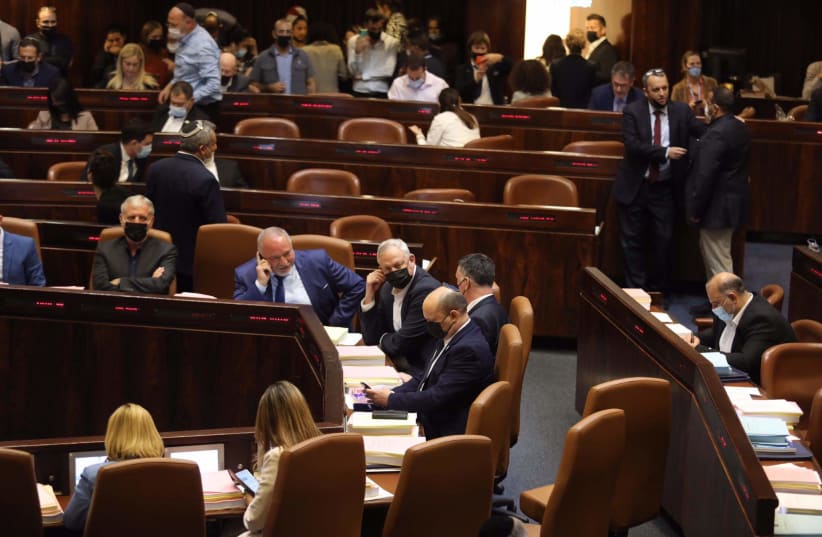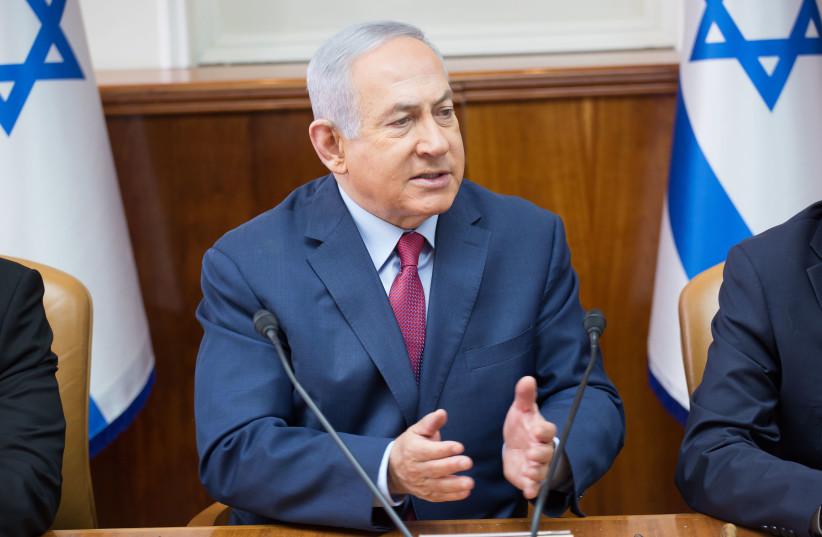Shortly after the IDF’s Home Front Command and National Emergency Authority (RAHEL) held a large-scale drill simulating war in the North, Israel’s Ministerial Committee on Civilian Preparedness for Emergencies convened for the first time in four years.
“This whole issue of home-front readiness comes from the view that when civilians have solutions, room to breathe, certainty and defense, the IDF has the ability to act and carry out its operational missions and decide the war,” Defense Minister Benny Gantz said.
“The issues discussed in the committee deal not only with scenarios of war but also with other scenarios such as damage from extreme weather, earthquakes, pandemics and other issues we are preparing for,” he said.
The committee, led by Gantz, included Public Security Minister Omer Bar Lev, Health Minister Nitzan Horowitz and Finance Minister Avigdor Liberman among others.
Calling the meeting one of great importance, Gantz said that what was discussed between the ministers and the work carried out by government bodies such as RAHEL and the Home Front Command “constitute an important component in our national security and resilience.”
Formed in 1992 after the first Gulf War, the Home Front Command is in charge of civil defense and is responsible for readying the country in case of conflict or disaster – be it natural or man-made.
Following the 2018 Mizrahi Committee, the Home Front Command was defined as the major operative body responsible for the local-authority and governmental-district levels, while RAHEL was in charge of the strategic level and for guiding the government ministries in overall preparation for emergencies.
“We are in a state of ever-improving readiness,” Gantz said, adding that as part of the state budget, NIS 1 billion over the course of three years will be used for bolstering shelter infrastructure in Northern Israel where millions do not have access to shelters.
According to a 2020 State Comptroller’s Report, millions of Israelis do not have basic protection options near their homes, 2.6 million residents (28%) still do not have basic protection from rocket attacks near their homes, and 2,494 of 12,601 public bomb shelters (20%) have been found to be inadequate.
The report stated that some public and shared private shelters in communities along the border are expected to be overcrowded during times of emergencies “that may not allow for prolonged stays.”
One of the goals of the week-long drill that took place in early November was not only to improve instructing civilians during times of emergency but to locate where mobile shelters would be best placed should people need to stay in them for extended periods of time.
Gantz said that in addition to the work being done in northern Israel, the defense establishment is also “finishing work on the barrier in the South and working to upgrade our air defense capabilities as well as the preparation of emergency operational plans.”
In July 2018, the Security Cabinet stated that a multi-year plan known as “Northern Shield” would be formulated for the years 2019-2030.
At the time, Liberman, who was defense minister, said that since the last war in the North in 2006, the government has invested some NIS 1.7 billion ($485 million) in protective facilities in southern Israel around the Gaza Strip where some 46,000 residents live, spending an estimated NIS 37,000 ($10,600) per resident.
Meanwhile, in the North, which is home to about 244,000 Israelis, the government during that time spent NIS 236m. ($68m.), or approximately NIS 970 ($280) per resident – just 2.6% of what it spent in the South.

